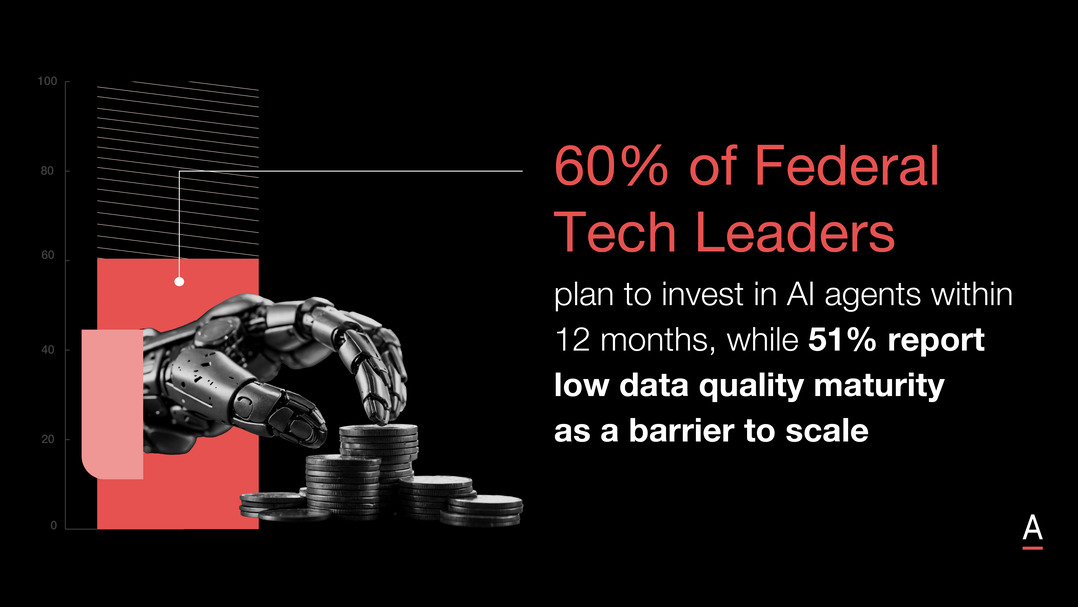How Australia’s Public Sector is Integrating Governance and Digital Leadership
Explore how Australia tackles governance challenges with digital innovation and strategic recovery plans while focusing on efficient, inclusive services.
Australia’s public sector is adapting its digital infrastructure to tackle intricate service delivery challenges.
This adaptation encompasses the cautious integration of AI to bolster operational efficiency while upholding ethical standards and privacy protocols.
This transition is characterised by practical tech implementations aimed at streamlining processes and facilitating better government and public communication.
Genuine digital innovation is highlighted, transcending mere technological advancements.
There’s a focus on fostering a supportive cultural framework that promotes psychological safety, autonomy in decision-making, and transparent leadership.
Notable examples demonstrate how government entities can deliver value to citizens by effectively leveraging data, eliminating inefficiencies, and maintaining transparent communication with the public and media to cultivate trust.
This strategic shift towards outcome-driven innovation marks a departure from the traditional process-oriented approach prevalent in the public sector.
Discussions revolve heavily around balancing innovation and responsible technology deployment to address contemporary demands efficiently.
Furthermore, a significant development occurred in the 2016-17 Budget, which allocated $500 million of projected savings for reforms like automating public services and business re-engineering.
While specific details were not outlined in the budget, the establishment of the Public Service Modernisation Fund in the 2017-18 Budget reinforced this commitment.
This fund aims to finance various initiatives over three years, from 2017-18, delivering high-quality government services at reduced costs and leveraging advanced technology and collaborative approaches to tackle complex societal issues.
1. Department of Health and Aged Care Drives Public Sector Innovation with Strategic AI Integration and Outcome Focus
In a community interview published on September 25, 2023, David Heacock, Senior Advisor to the Department of Health and Aged Care on digital health, shared insights into the evolution of digital transformation within Australia’s public sector.
David argued that true digital innovation goes beyond modern technologies, pointing to the need for a cultural foundation that supports psychological safety, decision-making autonomy, and transparent leadership.
Service NSW is a prime example of how government agencies can deliver remarkable value to citizens by effectively leveraging data, eliminating ineffective practices, and maintaining open dialogue with the public and media to build trust.

This strategy marks a shift towards outcome-driven innovation, moving away from the traditional process-focused approach that has historically characterised the public sector.
David also addressed the complex use of artificial intelligence (AI) in public service, advocating for a balanced approach that acknowledges AI’s potential to enhance government services while stressing the need for strict safeguards to ensure its responsible use.
This cautious yet optimistic stance on AI highlights the need for safety, transparency, and ethical considerations in deploying AI solutions.
The conversation touched on the critical data sharing and privacy issue, reflecting the public’s growing demand for integrated, efficient government services.
David referred to international benchmarks, such as the 21st Century Cures Act in the US, to demonstrate the transformative potential of interoperability and effective data sharing in improving service delivery, signalling a cultural shift towards embracing data-driven innovation to meet the evolving expectations of Australian citizens.
David’s insights offer a vision for the future of digital innovation in Australia’s public sector, centred on a strategic embrace of technology, a strong culture of innovation, and a focus on delivering meaningful outcomes.
This approach outlines a path for transforming public services into more responsive, efficient, and citizen-centred offerings, signalling a new era of public sector innovation that is technologically advanced and deeply human-centric.
Key Takeaway: Prioritise outcomes and implement AI safely for public sector progress.
2. Ipswich Council Leverages Data and Partnerships to Drive Smart City Innovations
In a session at ADAPT’s Connected Cloud & Data Centre Edge, Matthew Schultz, Chief Digital Officer of Ipswich Council, provided a realistic view of the digital challenges and opportunities within the Australian utilities sector.
Matthew has remarkably advanced Ipswich through a holistic Digital Strategy encompassing various facets such as Smart City development, Data and Infrastructure Management, Innovation, and Digital Enablement.
This strategy has positioned Ipswich as an innovative leader and earned it global recognition by the Intelligent Community Forum as a Top 7 Intelligent Community.
Matthew detailed Ipswich’s methods for managing the increasing volumes of data resulting from its rapid growth and the broader adoption of technology within its infrastructure.
As Queensland’s fastest-growing city, Ipswich’s strategy is built on a scalable architecture for efficient data collection, analysis, and utilisation. Ipswich aims to improve decision-making processes and operational efficiencies by deploying sensors and interconnected infrastructure.
Looking to the future, Matthew provided insights into the transformative potential of digital technologies, acknowledging the growing need for connectivity and the opportunities it presents for innovative data use.

He sees these technologies as tools to enhance community services and infrastructure, thereby improving living conditions for residents and visitors.
On data privacy and trust, Matthew underscored Ipswich’s dedication to creating responsible data management frameworks. These efforts ensure community confidence in the city’s digital initiatives.
Matthew also discussed the importance of collaborative efforts across various sectors to drive the innovative city agenda.
He advocated for an environment that fosters cooperation between government, the private sector, and communities, emphasising that such collaborations are essential for realising the comprehensive benefits of innovative city projects.
Matthew’s narrative highlights a pragmatic approach to navigating digital advancements.
By concentrating on scalable data management, fostering trust through responsible data practices, and encouraging sector-wide collaborations, Ipswich exemplifies a constructive model for the utility industry in Australia. It illustrates the practical impact of digital strategies on urban development and community well-being.
Key Takeaway: Matthew Schultz’s practical strategy propels Ipswich forward with data-driven solutions and collaborative efforts.
3. NSW Government Advances Data Science Workforce and Governance in Australia
Dr. Ian Oppermann, the Chief Data Scientist for the New South Wales (NSW) Government and an academic with the University of Technology Sydney, actively confronts Australia’s challenges in data governance and the notable shortage of data science professionals.
Dr. Oppermann outlines his approach to addressing these pressing issues through his dialogues with experts Aparna Sundararajan and Peter Hind.
Dr. Oppermann proposes frameworks that account for the data’s complexity to enhance data governance. These frameworks aim to protect sensitive information while facilitating its practical use.
His approach includes developing governance models that recognise data’s contextual value and sensitivity, aiming for governance measures that mitigate risks while encouraging beneficial applications.

Dr. Ian Oppermann’s initiatives in data-sharing strategies and adopting AI and Smart Cities frameworks signal a shift towards treating data with the same strategic planning as physical assets.
To mitigate the critical shortage of data scientists, which impacts the utility industry and public sector’s capability to use vast data resources efficiently, Dr. Ian Oppermann has initiated a talent development programme with the University of Technology Sydney.
This program recruits Master of Data Science students from diverse professional backgrounds to enhance technical skills with real-world applications.
He also highlights the evolving need for dynamic data governance frameworks to manage the growing volume of data, suggesting automation and profiling tools for simplifying data cleansing while maintaining the indispensable role of human review in ensuring data accuracy.
By marrying efforts to advance data governance with the cultivation of a skilled data science workforce, Dr. Ian Oppermann’s strategies aim to bolster the public sector’s operational efficiency and prepare Australia for a data-driven future.
Key Takeaway: Dr. Ian Oppermann’s dual focus on refining data governance and enriching Australia’s data science talent pool is crucial for enhancing public sector operations and readiness for future challenges.
4. NSW Public Services Enhance Digital Governance and Cloud Adoption
Laura Christie and Simon Geraghty have been instrumental in transforming New South Wales (NSW) public service delivery.
Under Laura’s guidance, the shift towards agile delivery methodologies has digitised 80% of government transactions, greatly enhancing digital governance in NSW.
Laura’s initiatives, like the digital driver’s licence and the development of a spatial digital twin for NSW, have improved urban planning and infrastructure development and ensured that digital services are inclusive and cater to all citizens, including those with disabilities.
Through projects like digital identity systems, Laura aims to secure and simplify how citizens manage their personal information.
In parallel, Simon has led the NSW government’s strategic adoption of cloud technology, aligning with the Cloud Strategy and Policy introduced in October 2020.

This cloud-first approach aims for a 25% cloud-based workload for government agencies by 2023. The Family and Community Services’ child protection system’s move to a Salesforce SaaS platform exemplifies the shift from outdated systems to more efficient cloud-based solutions.
Laura and Simon’s combined efforts in modernising NSW’s IT infrastructure through digitisation and cloud technology aim to secure data, streamline service delivery, and achieve economic efficiencies through strategic partnerships and collective purchasing agreements.
Their forward-looking strategies, incorporating artificial intelligence, data analytics, and rigorous cyber security, signify a comprehensive approach to leveraging technology to serve the public’s evolving needs.
Key Takeaway: Through strategic digitisation and cloud adoption, Laura Christie and Simon Geraghty are enhancing the accessibility and efficiency of NSW’s public services, marking an important evolution in government operations.
5. Service NSW Advances Digital Governance and Service Delivery with Strategic Initiatives
In New South Wales (NSW), strategic actions by Damon Rees, Katie McDermott, and Victor Dominello have propelled the state into a leading position in digital governance, markedly improving the delivery of government services and enhancing privacy measures.
Katie McDermott has played a pivotal role in the technical renovation at Service NSW, especially in introducing an API-driven framework.
This move has improved the organisation’s flexibility, allowing swift adjustments of services to cater to user demands.
Her emphasis on developing solid digital platforms has delivered secure and dependable services, meeting the public’s expectations for efficiency and trust in government interactions.
An important milestone achieved through their guidance is the significant increase in the adoption of digital licences, with over 80% of NSW residents now utilising this service.
This figure reflects the effectiveness of their digital strategies, showing a broad endorsement and trust in transforming public services to digital formats.

Additionally, Katie’s progressive vision is demonstrated by the expected introduction of a national digital identity verification service by 2024.
This initiative is designed to streamline and safeguard interactions with government services, heralding a future where digital governance is effortless and comprehensive.
With his expertise and forward-thinking leadership, Damon played a pivotal role in transforming Service NSW into a beacon of customer service excellence within the Australian utilities sector.
As the former CEO of Service NSW and the current managing principal at BAU, Damon championed a customer-centric philosophy that fundamentally altered the government service delivery landscape, enhancing user trust and satisfaction.
Under his stewardship, Service NSW adopted five leadership priorities that became the foundation of its operational ethos:
- Prioritising customer needs
- Fostering employee wellbeing
- Cultivating effective partnerships
- Enhancing organisational flexibility
- Building trust with the public
These principles were not merely theoretical; they were actionable directives that guided Service NSW’s strategic approach, resulting in prominent levels of customer satisfaction even as the organisation underwent considerable digital transformation.
Damon was focused on tackling ‘failure demand’—a concept where services fail to meet the customer’s needs on the first attempt, leading to repeated efforts and increased dissatisfaction.
He advocated for agile financial and organisational management practices, including flexible funding models and the efficient allocation of resources. This approach ensured that digital initiatives were well-supported and aligned with the public’s dynamic needs.
Victor Dominello’s contribution has been equally impactful, particularly regarding digital identity and privacy.
His initiatives have led to a dramatic increase in the use of digital licences, with adoption surpassing 80% among NSW citizens.
Looking ahead, the 2024 launch of a national digital identity verification service promises to simplify further and secure Australians’ engagement with government services.
Victor has also played a key role in fostering collaboration with academic institutions, such as his work with the Trustworthy Digital Society Hub.

This partnership is actively developing citizen-centred digital platforms that prioritise privacy, a move critical for building public trust in digital initiatives.
These strategic efforts collectively offer a blueprint for other governments aiming to modernise their services.
Service NSW’s example under the leadership of Damon, Katie, and Victor demonstrates the effectiveness of a proactive, citizen-focused approach to digital governance.
Key Takeaway: Through strategic innovation and a commitment to privacy, Damon Rees, Katie McDermott, and Victor Dominello are leading Service NSW to new heights in digital governance, making government interactions more straightforward, secure, and centred around citizen needs.
Conclusion
Australia’s governance system confronts noteworthy hurdles due to its intricate federal structure. Issues stem from overlapping government responsibilities, demographic changes, economic strains post-COVID-19, and environmental worries.
Experts such as Fiona McKenzie and Treasurer Josh Frydenberg highlight the need for clearer governance, strategic economic recovery plans, and more robust environmental policies.
Innovations in digital governance and public service delivery are seen as critical solutions.
David Heacock’s advocacy for outcome-focused innovation and AI safety, Matthew Schultz’s data-driven approach in Ipswich, and Dr. Ian Oppermann’s data governance and workforce development strategies highlight the move towards a more efficient, responsive government.
Similarly, the efforts of Laura Christie, Simon Geraghty, Damon Rees, Katie McDermott, and Victor Dominello in digitising NSW’s services through cloud adoption and strategic digitisation point to a future where public services are more accessible and streamlined.
These insights and actions suggest that embracing technological innovation, enhancing intergovernmental collaboration, and prioritising citizen-centric approaches are crucial for overcoming Australia’s governance challenges.
This streamlined focus prepares the stage for future initiatives to improve governance transparency, efficiency, and inclusivity.

























